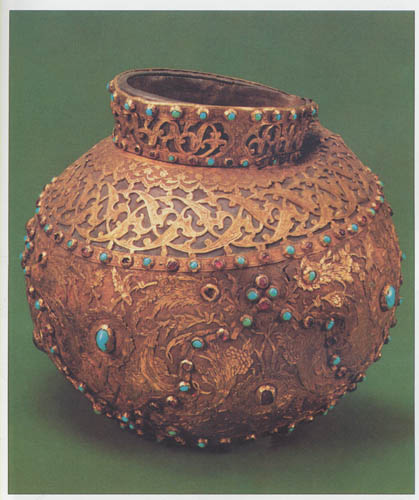



The beginning of the end for the Dadiani dynasty, and for Odishi as an independent state, came in the late 18th century. In 1790, in an effort to rein in the endless internecine rivalries and conflicts that had plagued Georgia for centuries, the rulers of the western Georgian states of Imereti, Guria, and Odishi signed a treaty with the eastern Georgian kingdom of Kartli-Kakheti, a union of two formerly separate kingdoms created in 1762. This treaty included an oath of loyalty to Kartli-Kakheti’s King Irakli II—whose Kingdom was itself rapidly falling under the domination of Russia, beginning with the 1783 Treaty of Georgievsk that brought the Kingdom under the umbrella of Russian military protection, and culminating in outright annexation into the Russian Empire in 1801.
However, the 1790 treaty did not bring the power struggles among western Georgian rulers to an end. Within a few years, Odishi’s ruler, Gregory Dadiani, was forced to turn to the east for support in surmounting ongoing challenges to his rule from both usurpers within Odishi (his stepbrother Manuchar) and rivals outside its borders (Imereti’s King Solomon II). After 1801, Gregory’s appeals were directed not to the King of Kartli-Kakheti, but rather to Pavel Tsitsianov, the governor of the Russian Empire’s new territories in eastern Georgia.
Support came at the cost of independence. In 1803, Odishi became a protectorate of Russia, and its name was changed to Samegrelo (in Georgian) or Mingrelia (in Russian). In the spring of 1804, Russian forces moved from eastern Georgia into Samegrelo, which provided the Tsar with a bridgehead for occupying the remaining Georgian territories, a base for Russia’s ongoing struggle against Turkey, and access to Black Sea trade routes. However, for 50 years afterward, Russia continued to allow Samegrelo to enjoy a high degree of autonomy in its internal affairs.But following the Crimea War (1854-1856), Russia’s rulers saw an opportunity to extend the Empire’s reach and eliminate the Principality. Just before the War, Samegrelo’s ruler David Dadiani had died, and because his son and successor Nikolas was only seven years old, David’s widow Ekaterine became the Principality’s interim ruler. Her short reign was marked by the turmoil of a Turkish invasion and the upheaval of internal political unrest. In 1856, when Ekaterine was in Russia attending the coronation of Tsar Alexander II, the serfs and peasants of Samegrelo openly rose up in anti-feudal, pro-Russian riots. This provided a pretext for the introduction of direct Russian administration of Samegrelo the following year.Despite Russia’s de facto annexation of Samegrelo, Nikolas Dadiani was still considered the successor to the Principality’s throne for nearly a decade, until he formally abdicated under pressure from Russia’s rulers. On January 4, 1867, the Russian Empire officially abolished the autonomous Principality of Samegrelo.

In 1918, grasping the opportunity provided by the Bolshevik revolution in Russia, Georgia declared itself an independent state, and Samegrelo became part of the new Democratic Republic of Georgia. However, the Republic was short-lived. In 1921, the Red Army rolled into Georgia, and the young nation’s sovereignty was soon at an end. Georgia was incorporated into the Soviet Union—first as part of a Transcaucasian Republic along with Armenia and Azerbaijan, and after 1936 as a separate Georgian Soviet Socialist Republic.
In 1991, following the generally peaceful internal collapse of the Soviet Union, Georgia again became an independent state. The territory of the Principality of Samegrelo is now a part of the administrative region of Samegrelo-Zemo Svaneti in the Republic of Georgia.
However, shortly after Georgia gained its independence, ethnic Abkhaz separatists declared Abkhazia, which includes a small part of the territory of historical Samegrelo, a separate and independent state. During a bloody armed conflict over the secession in the 1990s, Abkhaz secessionists expelled many thousands of ethnic Georgians from the region, resulting in a flood of refugees. Although Abkhazia’s sovereignty is not recognized internationally, it maintains an effectively independent status to this day with the support of Russia.
The prospects for reincorporating Abkhazia into Georgia received a setback in 2008, following a brief war between Georgia and Russia over the fate of South Ossetia, another separatist enclave backed by Moscow. This war, which both sides blamed the other for precipitating, hardened Russia’s line on support for Georgia’s breakaway regions.